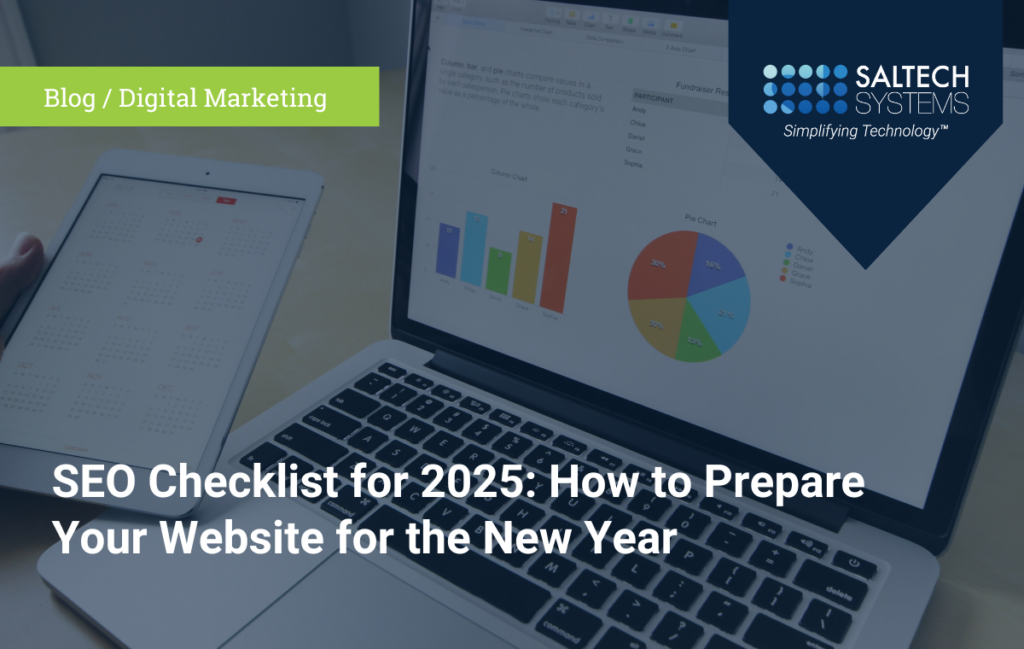The new year is coming faster than you think and ensuring your website is optimized for search engines is crucial to maintaining and improving your online presence. With search engines like Google continuously updating their algorithms and user behavior constantly evolving, staying ahead of changes is essential. This SEO checklist will help you prepare your website for SEO success in the new year.
Audit Your Current SEO Performance
Before making any changes, assess your current SEO status using tools like Google Analytics, SEMRush and you can even receive a free SEO audit through our website. Using these tools, you can evaluate key metrics such as:
-
Organic Traffic Trends –
This refers to the number of people who visit your website through unpaid (organic) search results on search engines like Google. It shows whether more or fewer people are finding your site naturally over time.
-
Top-Performing Keywords –
These are the words or phrases that people type into search engines to find your website. The “top-performing” ones are the keywords that bring in the most visitors to your site.
-
Pages with High Bounce Rates –
A “bounce” happens when someone visits your website but leaves without clicking on anything else.
-
Mobile vs. Desktop Performance –
This compares how well your website performs on mobile devices (like phones) versus desktop computers. This is extremely important as many people are using their phones to browse on sites.
-
Core Web Vitals –
These are a set of important metrics that measure how user-friendly your website is, especially in terms of speed, responsiveness, and stability.
-
Backlink Profile –
Your “backlink profile” is a collection of all the websites that link to your content. Having more quality backlinks helps your website appear more trustworthy to search engines, boosting your rankings.
Ensure Mobile-First Optimization
In 2025, a mobile-friendly website is critical not just for user experience but also for rankings. You can use SEMrush’s Mobile Friendly Website Checker to quickly assess whether your site is optimized for mobile devices and identify any issues that may need to be addressed.
Focus on Quality Content and User Intent
Google’s algorithms are increasingly favoring content that matches user intent. This means that not only should you focus on optimizing for keywords, but also focus on answering the questions your audience is asking. For example, is the user looking for information, a product, or something else?
Enhance Your Local SEO Strategy
46% of all Google searches are seeking local information (SEMRush), emphasizing how essential local SEO is for businesses targeting geographical areas. You can enhance your local SEO by updating your Google Business Profile , encouraging customer reviews on Google and other platforms, and using local keywords in your descriptions, title, and other content.
Optimize for E-A-T (Expertise, Authoritativeness, Trustworthiness)
E-A-T is a framework that Google’s human reviewers use to assess content quality. Google emphasizes on delivering search results that have strong expertise (Does the creator have re;evant knowledge and skills?), authoritativeness (Is the creator a go-to source in this industry?) and trustworthiness (how reliable and accurate is this content?). To make sure all of these boxes are checked off, ensure that all of your content is reviewed by experts, include bios, reviews and credentials to build trust, and earn authoritative backlinks to boost your site’s credibility.
